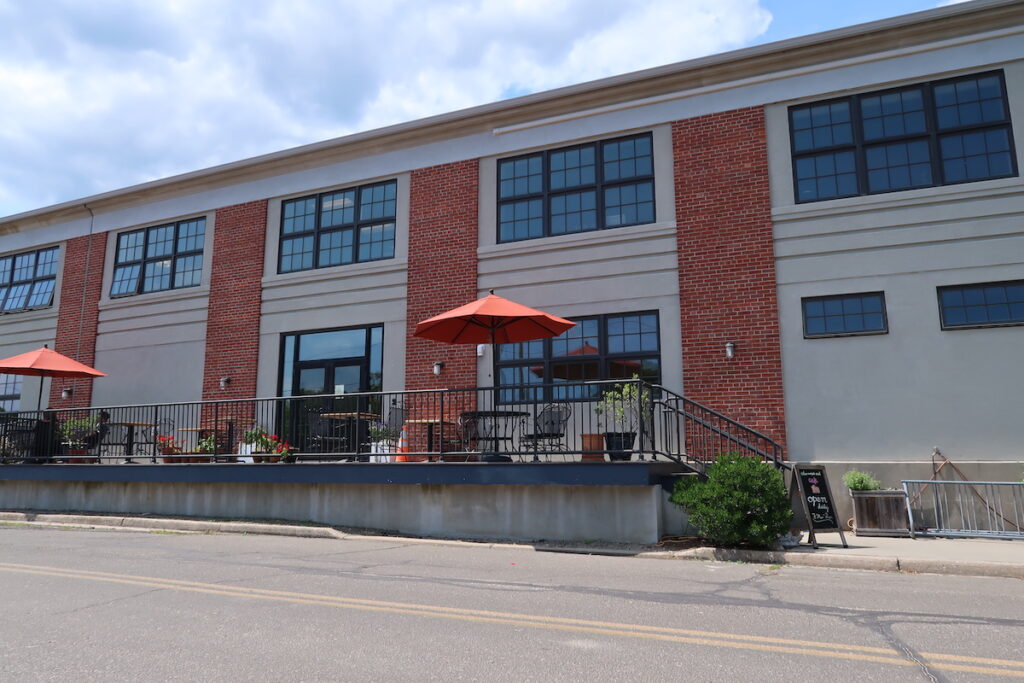Town’s consulting firm dismisses all concerns raised by engineer on proposed Enclaves project

A consulting firm hired by the town has affirmed the accuracy of a study evaluating the potential traffic impact of the proposed Enclaves Hotel and Restaurant.
Several community members expressed concern about the study at public hearings over the past year, including engineer and civic leader Margaret Steinbugler, who has submitted three letters since April that refer to technical manuals in questioning the data in the report. Her claims led the Planning Board to take the unusual step of hiring Nelson + Pope Engineering, Architecture & Land Surveying, PLLC to review her letters and check for flaws in the traffic study, which was completed by Dunn Engineering Associates, P.C. in December 2018.
N+P found nothing out of order or any serious flaws in the study and, at last Monday’s Planning Board meeting, a planning staff member said, “My feeling is that they’ve done their due diligence. We’ve done our job by going back a second time, getting answers to some questions and concerns [Ms. Steinbugler] had found.”
According to the DEIS, turning traffic counts were collected by Dunn Engineering on several occasions during peak hours in July 2018. At public hearings, several people pointed out that traffic numbers may have changed due to the pandemic, with an increase in residents and visitors to the North Fork. A gap analysis was performed on Oct. 24, 2020, by Stonefield Engineering & Design, according to the Final Environmental Impact Statement.
As lead agency, the Zoning Board of Appeals had hired N+P to review the DEIS and the traffic study it included. The ZBA made a findings statement under SEQRA, with conditions to mitigate traffic impacts. N+P submitted a traffic sensitivity analysis of special events to the ZBA in March 2021. The agency also reviewed the Draft Scope, participated in the scoping session and reviewed multiple draft versions of the DEIS, which was last revised in October 2019.
The N+P traffic study discussed last Monday by the Planning Board was conducted separately from the ZBA, at the request of the Planning Board, which is unlikely to reopen the hearing, since new information has not been presented.
N+P noted in an Aug. 5 memo to the town that, based on definitions from the Institute of Transportation Engineers (ITE) Trip Generation Manual, the area surrounding the Enclaves is a suburban setting. In her letters, Ms. Steinbugler had commented that Southold Town and the Southold hamlet are neither urban nor suburban. In the manual, rural is defined as “agricultural or undeveloped except for scattered parcels and at very low densities.”
Ms. Steinbugler also disputed applicant testimony that traffic increases would be negligible, arguing that a New York City technical manual notes that an increase in projected traffic delay of four or more seconds should be considered significant. The included traffic study outlines a 4.7-second increase in delays at a nearby intersection, she said.
N+P responded that the “threshold between significant and insignificant levels … are for signalized intersections,” and the manual she references states that at an unsignalized intersection, “for the minor street to trigger a significant impact, a total approach volume” of 90 passenger car equivalents would trigger a significant impact.
“The intersection of Boisseau Avenue and Main Road is unsignalized. Based on the above criteria, an increase in delay of more than four seconds for the minor approach … will not be considered a significant impact if the approach volumes are less than 90 vehicles,” N+P writes. “This does not occur for the weekday AM and PM peak hours for the intersection of Boisseau Avenue and Main Road.”
Responding to another comment from Ms. Steinbugler, who criticized the study’s assumptions about the directional distribution of traffic, the agency also outlines peak summer traffic volumes heading east and west at the site in the morning, evening and on Saturdays. N+P sources a 2019 traffic impact study for that data and points out that there are several attractions east of the hotel that are likely to attract guests.
N+P’s response also notes that trip generation data for restaurants provided in the ITE Trip Generation Manual are based on both seats and square footage and argued its trip generation estimation for The Enclaves had been conservative, since some restaurant patrons will likely originate from the hotel. The agency adds that the peak hour for hotel traffic doesn’t coincide with peak traffic times on the adjacent street.
Ms. Steinbugler told The Suffolk Times that she found many elements of the N+P report “to be nonresponsive, irrelevant, unsubstantiated, or misleading.”
“It is not clear to me how the Planning Board factored in my points, if at all, in making their decision to adopt the ZBA’s findings statement,” she wrote in an email.
In an Aug. 17 letter to the Planning Board, Ms. Steinbugler thanked the board for asking N+P to review her comments. She wrote: “I continue to stand by my conclusions that the project’s Traffic Impact Study (TIS) understates both restaurant and hotel traffic and underestimates the increase in Main Road traffic (all independent of any assumptions about traffic split) and doesn’t strictly comply with the Institute for Transportation Engineers (ITE) Trip Generation Manual (TGM).
“I estimate that the project will increase Main Road weekday peak afternoon traffic by 6.6-13%, independent of traffic split assumptions, in contrast to the applicant’s assertion that the traffic increase will be less than 4%,” she continued, noting that the traffic increase would be higher based on the number of employees she had calculated.
Ms. Steinbugler emphasized the hours she spent reviewing the agency’s points, making calculations to support or refute their comments and re-reviewing project documents, and attached a detailed analysis of their response.
She disputed N+P’s claim that the proposed hotel will be supported by 12 employees, and provided a link to the DEIS, which estimates that the hotel will create around 43 jobs and the restaurant will create around 10. The number of employees will increase traffic generation at the site, she argued.
Ms. Steinbugler, who wrote detailed refutations to each of N+P’s points, acknowledged that the Town of Southold would be considered a suburb. However, she pointed to what she said are flaws in the methods used for many of the report’s calculations and poked holes in its reasoning.
“N+P’s second comment deals with the increase in level of service delay of 0.7 seconds at the intersection of Boisseau Avenue and Main Road, which is significant according to NYC Dept of Transportation standards,” she wrote. “N+P notes that the project is not expected to add to southbound traffic at Boisseau and Main Road. This may be true, but it isn’t relevant. It is the traffic on Main Road generated by the project that will increase the delay for turns from Boisseau (or any side street) onto Main Road.”
She added that even if west and east traffic does not change, an uneven distribution of traffic split would still be impactful. “To someone driving west-bound on Main Road stuck behind a backup at the Youngs Avenue traffic light due to guests departing the hotel or restaurant to the west, it matters little that the east-bound traffic is sparse and moving freely,” she wrote.
Ms. Steinbugler also wrote that N+P did not address her arguments that the traffic impact study did not adhere to ITE guidelines, and that data on local trip generation rates should have been collected.








